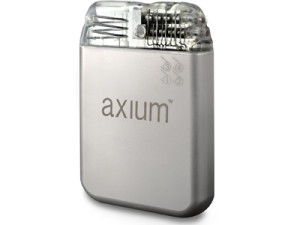
Long-term data from the ACCURATE study have confirmed dorsal root ganglion (DRG) stimulation with the Axium neurostimulator system (St Jude Medical) provides sustained and superior pain relief, over traditional spinal cord stimulation (SCS) in patients with complex regional pain syndrome (CRPS) or peripheral causalgia (PC). In addition, patients receiving DRG stimulation reported better therapeutic targeting and a reduction in paraesthesia compared to traditional tonic SCS.
The data were presented at the 19th annual meeting of the North American Neuromodulation Society (NANS) in Las Vegas, USA, and confirm three month primary endpoint data originally presented at the International Neuromodulation Society (INS) annual meeting in June 2015.
“DRG stimulation represents hope to many patients eager for more meaningful treatment options for complex and hard-to-treat neuropathic chronic pain conditions,” says Robert Levy, director of the Marcus Neuroscience Institute in Boca Raton, Florida, and co-principal investigator of the ACCURATE study. “The data from the ACCURATE study have shown us that DRG stimulation yields long term meaningful pain relief for patients with complex regional pain syndrome and peripheral causalgia. The results of this trial are very exciting for those of us who treat patients with these debilitating conditions.”
Long-term, 12-month data from the ACCURATE study showed DRG stimulation includes:
- Pain relief: After 12 months, the ACCURATE study demonstrated a statistically significant number of patients receiving DRG stimulation achieved meaningful pain relief and greater treatment success when compared to patients receiving traditional SCS (74.2% vs. 53%).
- Improved therapeutic targeting: Nearly all patients receiving DRG stimulation reported better stimulation targeting in their area of pain without extraneous paraesthesia than patients receiving traditional SCS (94.5% vs. 61.2%).
- Reduced paraesthesia: After 12 months, more than a third of patients who received DRG stimulation were experiencing greater than 80% pain relief with no paraesthesia.
“The long term data from the ACCURATE trial further confirm that DRG stimulation with the St Jude Medical Axium system can provide sustained and superior outcomes for patients suffering from chronic pain conditions that are currently very challenging to treat using traditional spinal cord stimulation,” says Allen Burton, medical director of neuromodulation and vice president of medical affairs at St Jude Medical. “Patients battling complex regional pain syndrome and peripheral causalgia have very few options, and we believe DRG stimulation will provide a meaningful treatment option to patients suffering from these conditions.”
By targeting the DRG, the Axium system has been shown to provide pain relief to patients with neuropathic conditions currently underserved by traditional SCS.
The ACCURATE study represents the largest study to date evaluating patients suffering from neuropathic chronic lower limb pain associated with CRPS or PC. St Jude Medical submitted their premarket approval (PMA) submission to the FDA for approval of DRG stimulation in Q1 2015. The Axium Neurostimulator System has been available in Europe since 2011.













